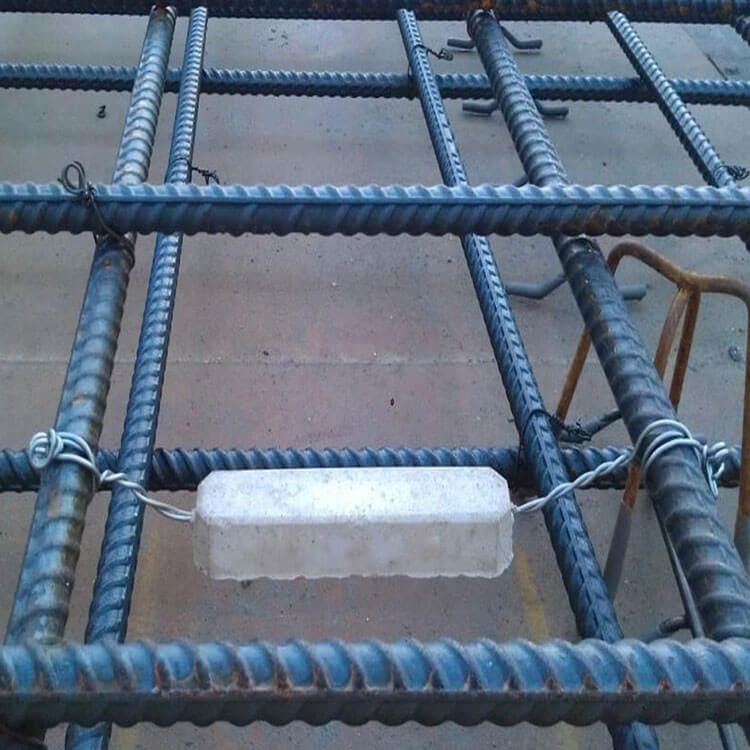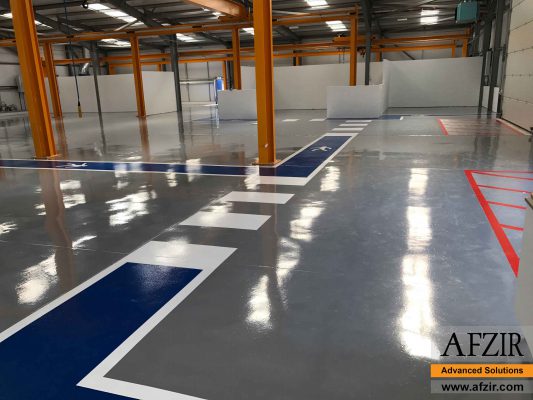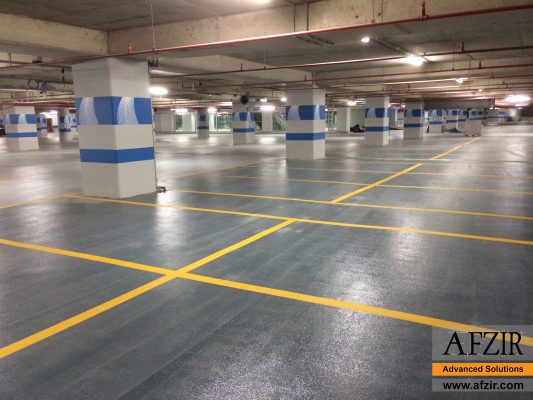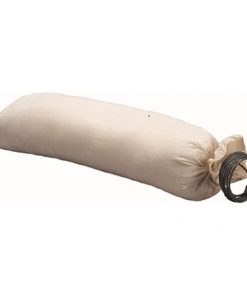PRODUCT DESCRIPTION
Sacrificial Anode, made of a zinc metal core, is a protective coating used on concrete surfaces and metal reinforcements to enhance and strengthen the rebar. This product significantly increases structures’ lifespan, durability, and stability over an extended period. Afzir Company recommends using sacrificial anodes for contractors and builders due to their ease of installation, quick implementation, and cost-effectiveness compared to other retrofitting and improvement methods.
The protective properties of sacrificial anodes stem from their highly negative reduction potential. When the sacrificial anode is close to a metal with a higher reduction potential, it converts that metal into a cathode. By utilizing the flow of current, it transfers oxidizing agents through electrons. As a result, the sacrificial anode is consumed instead of the vital metal present in the desired structure, such as steel reinforcement. Structures or constructions equipped with sacrificial anodes can maintain their mechanical properties for many years, ensuring optimal performance. Consequently, such structures have significantly longer service lives compared to conventional ones.
Sacrificial anodes of alloy type 1 are specifically formulated in saltwater or marine environments. They find extensive applications in reservoirs, pipelines, docks, vessels, and other marine settings.
Sacrificial anodes of alloy type 2 incorporate standard alloys and are effective in freshwater and buried structures in soil. These anodes can be used with or without backfill.
|
Composition (%) |
Alloy Type 1 (Type I) |
Alloy Type 2 (Type II) |
|
Aluminum |
0.1-0.5% |
Max 0.005% |
|
Cadmium |
0.025-0.07% |
Max 0.003% |
|
Iron |
Max 0.005% |
Max 0.0014% |
|
Lead |
Max 0.006% |
Max 0.003% |
|
Copper |
Max 0.005% |
Max 0.002% |
|
Other Materials |
Max 0.1% |
— |
|
Zinc |
Remaining |
Remaining |
Price of Sacrificial Anodes:
The mass and dimensions of sacrificial anodes significantly impact their performance. A higher mass implies a longer lifespan before depletion. Therefore, it is essential to determine the desired mass and dimensions of sacrificial anodes based on the intended objectives before procurement. The price of sacrificial anodes varies depending on factors such as dimensions, purity percentage, weight, the presence or absence of backfill, alloy type, and market fluctuations. For more information or accurate price inquiries regarding sacrificial anodes or other corrosion protection products, please contact our experts at Afzir through the communication channels provided on the Afzir website.
Features
- No need for an external power supply
- Easy installation
- Low voltage
- Reduced maintenance and repair costs
- Uniform distribution
- High service life
- Prevention of corrosion in steel rebars or other important metal elements
Applications
- Wharves
- Tanks
- Pipelines
- Structures buried in the ground
- Post-tensioned or pre-tensioned structures
- Structures exposed to chloride
- Reinforcement strengthening for corroded rebars.
Packaging
- 30 pieces per package
Colour
- –
technical specifications
|
Appearance of the product |
One-component grey powder |
| Mixing ratio |
4-5 liters of water for 25 kilos of grout powder |
|
Operating temperature |
7-32℃ |
| Final setting time |
2-8 hours |
|
Specification |
Sample 8160CP |
Sample 8105CP |
Sample 8065CP |
|
Color |
Orange |
Blue |
Green |
|
Packaging (Layers/Pack) |
24 |
24 |
30 |
|
Total Anode Weight |
370g |
340g |
240g |
|
Zinc Type |
ASTM B418, Type II |
ASTM B418, Type II |
ASTM B418, Type II |
|
Area of Zinc |
279cm2 |
258cm2 |
133cm2 |
|
Exterior Surface |
258cm2 |
258cm2 |
215cm2 |
|
Zinc Weight |
160g |
105g |
65g |
Our product is designed to enhance efficiency and improve the performance of structural elements by utilizing anodes to extend their life cycle. With the assistance of a zinc metal core, it generates a small electric current that effectively safeguards concrete and steel reinforcements from corrosion. This proactive protection mechanism significantly contributes to the longevity and durability of the structures, ensuring their optimal performance over time.
The sacrificial anode serves as a protective coating for concrete, applied to both concrete surfaces and metal reinforcements to enhance and reinforce the rebar. By effectively extending the lifespan, strengthening durability, and ensuring long-term stability, this product significantly contributes to the structure’s overall strength. Afzir Company highly recommends the sacrificial anode product to contractors and builders, citing its ease of installation, efficiency, and cost-effectiveness when compared to alternative retrofitting and improvement methods.
Surface Preparation:
To ensure optimal adhesion and strength, it is imperative to prepare the surface appropriately. Begin by removing any loose or delaminated concrete as per the recommended guidelines. Clearly mark the desired area and eliminate damaged concrete from the surface. It is crucial that both the desired surface and reinforcement are thoroughly cleaned and free from any extraneous materials.
Placement:
The anode should be carefully positioned in the desired area, creating a suitable layer over the reinforcement. Additionally, ensure that all joints on the reinforcement surface are adequately covered with repair mortar. For effective electrical connection and optimal anode performance, it is important to note that only structures with uncoated steel reinforcement are suitable. The continuity and durability of the electrical connection must be verified through an armature test. This can be achieved by employing common methods such as wire connections or welded connections.
To establish an electrical bond, hand-tighten two pairs of pre-twisted wires around the steel armature, enclosed within a double sheath. Twisted wire connections enable a proper electrical connection at a specific distance from the location of the anode on the steel armature.
Safety Precautions:
- Use gloves to prevent skin allergies and protect your hands.
- Wear safety glasses to prevent eye irritation and safeguard your eyes.
- use appropriate clothing, gloves, and masks for added protection when working in environments exposed to chemicals.
- Ensure the work area is airy to maintain a safe environment.
Emergency Procedures:
- In the event of skin contact, promptly wash the affected area with soap and water.
- If the product comes into contact with your eyes, immediately rinse them with plenty of water and seek medical attention.
- If you experience breathing difficulties using the product, consult a doctor immediately.
Environmental Considerations:
- The product does not pose any environmental hazards.
Maintenance:
- The product has a shelf life of up to 36 months from production.
- If storing the product, place it vertically on special protective pallets in a dry location, away from direct sunlight.
technical documents
Photo Gallery
Technical documentation request
Frequently Asked Questions
Galvanic sacrificial anodes are encapsulated anodes made of zinc metal that are individually designed in a special mortar.
The galvanic anode or embedded anode is the main component of the galvanic cathodic protection (CP) system, which is used to protect buried or submerged metal structures against corrosion.
This product increases the efficiency and improves the performance of structural elements with the help of anodes to increase the life cycle of the structure. The zinc metal core creates a small electrical current generated to protect concrete and steel reinforcements from corrosion.
For proper electrical connection and anode performance, only structures with uncoated steel reinforcement are suitable.
Three metals zinc, aluminum and magnesium can be used as sacrificial anodes.
Zinc is an excellent choice for an embedded anode because it is a very active metal that can be sacrificed. Zinc anodes are recommended for saltwater applications such as boat hulls, tanks, rudders and docks.
Sacrificial anodes are used to protect ship hulls, water heaters, pipelines, distribution systems, above ground tanks, underground tanks and refineries. Anodes in sacrificial anode cathodic protection systems should be periodically inspected and replaced when used.
The sacrificial anode is used for structures that are exposed to chlorides, as well as for concrete and masonry structures that need strengthening.
This anode is very resistant to carbon and sulfate.
What is meant by embedded anode?
What is the purpose of embedded anode?
How does the embedded anode increase the efficiency and improve the performance of structural elements?
In what structures does the embedded anode make a suitable electrical connection?
What metals can be used as embedded anodes?
Why is zinc used as an anode?
When do you use a sacrificial anode?
In what structures is the sacrificial anode used?
What elements is the sacrificial anode resistant to?














Be the first to review “Embedded Galvanic Anodes”